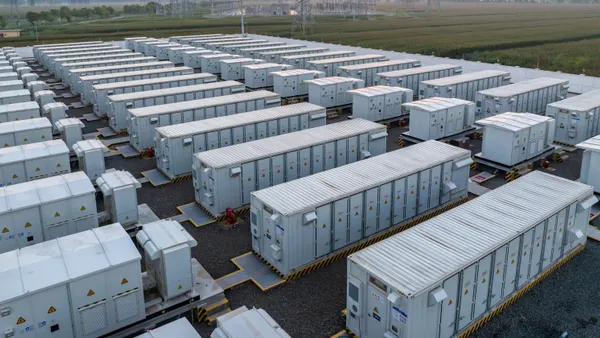Dive Brief:
- The California Public Utilities Commission's (CPUC) wildfire safety division last week issued a 2020 safety certification for Pacific Gas & Electric (PG&E), despite raising multiple concerns about the utility's operations and fire mitigation processes.
- These concerns include problems identified during field inspections, reports from PG&E's court-appointed federal monitor, as well as the investigation into the utility's potential role in sparking last September's Zogg Fire, which led to four fatalities and destroyed 204 structures.
- The safety certification, which is valid for 12 months, provides utilities with an easier burden of proof test to recover costs related to catastrophic wildfires from the state's wildfire insurance fund, created in 2019 by Assembly Bill 1054.
Dive Insight:
The CPUC granted PG&E its first safety certification in August 2019 and last July, the utility's then CEO and President Andrew Vesey wrote to the agency requesting certification for 2020. The letter said that PG&E had met all the associated requirements, including drafting a wildfire safety plan for 2020 that was approved by the commission last summer.
Last week, Caroline Thomas Jacobs, director of the CPUC's Wildfire Safety Division, issued a filing acknowledging that the utility has met the "minimum requirements" for a safety certification — like having an approved wildfire mitigation plan, creating a safety committee for the company's board of directors and agreeing to implement the findings of its safety culture assessment. At the same time, Thomas Jacobs raised questions about how the utility is implementing its 2020 fire mitigation plan, as well as the safety of its operations.
For instance, the division's compliance officials have conducted more than 1,600 inspections into how PG&E is complying with its wildfire mitigation strategies, and found 140 defects such as vegetation too close to powerlines, trees identified as a potential risk that weren't removed and damaged utility poles, the letter noted.
In October, the federal monitor appointed to supervise PG&E's probation raised concerns that the utility completed a large portion of its vegetation management work in 2019 in low fire risk areas as it sought to meet its targets — suggesting that "PG&E is manipulating its performance metrics," the division's filing said.
And the safety division intends to monitor the investigation being conducted by the California Department of Forestry and Fire Protection as well as the CPUC into PG&E's potential involvement in the Zogg Fire.
PG&E welcomes the feedback from the regulator, stakeholders and customers about its performance, utility spokesperson Lynsey Paulo said in an emailed statement.
"We know we have more work to do, and we are committed to doing it the right way for our customers and communities," she added.
Some stakeholders, however, remained critical of the certification, and questioned why the division granted PG&E the certification while also detailing problems with its wildfire mitigation processes.
"To me, this feels like a 16-year-old going to get their first drivers test and the DMV says, well, during the test you ran a red light and made an illegal U-turn and you probably hit and killed four pedestrians — but here's your drivers license anyway," April Rose Maurath Sommer, executive and legal director of the Wild Tree Foundation, said.
The issuance of the safety certification is conditioned on PG&E having an approved wildfire mitigation plan — but the process for approving that plan has been changed from one where the public had the opportunity to get involved to a more ministerial function, Maurath Sommer said.
"So there's not an opportunity for legitimate, meaningful involvement by the public in the approval of the [plans] and that becomes the basis for the safety certification," she added.
Ratepayer advocacy group The Utility Reform Network is also "deeply troubled by this decision," Tom Long, legal director of the group, said.
The certification essentially allows PG&E an easier "prudency standard" with regards to wildfires, where they are presumed to be prudent unless that's shown to not be the case, according to Long. If a utility is not found to be imprudent in this regard, it does not need to reimburse any of the money it takes out of the state's wildfire insurance fund — a $21 billion pool equally funded by ratepayers and utility shareholders.
"If the wildfire insurance fund is depleted fast, then we're going to have to find another way to deal with all these wildfire issues again. AB 1054 will have been a very short-lived way to deal with it, and ratepayers are at risk of being forced yet again to have to pay for utility-caused wildfires," Long said.













